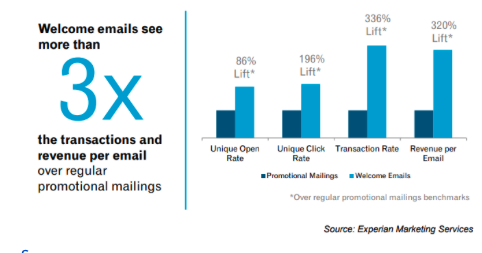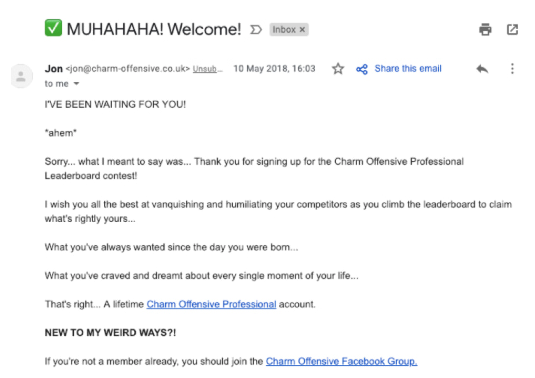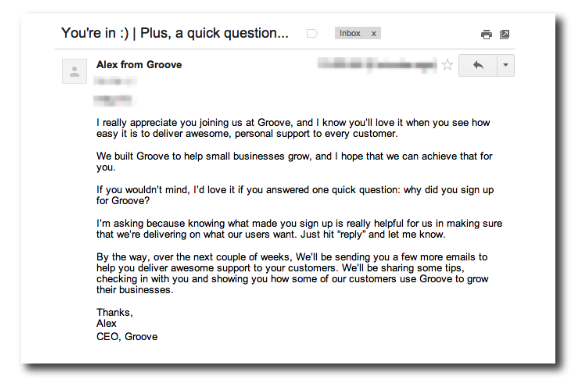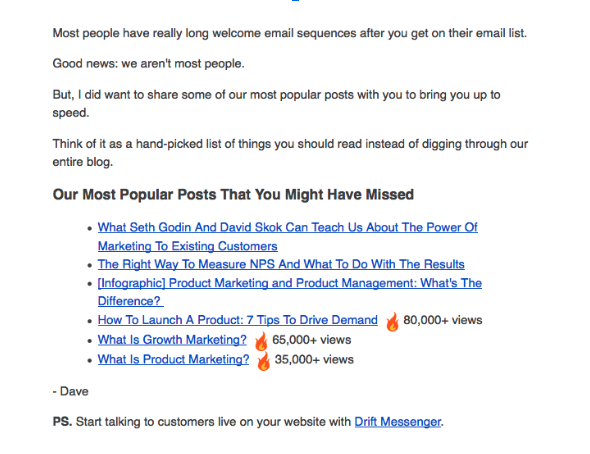First impressions are important, especially when you’re probably competing with tons of other companies for the attention of your target customers.
This is why the very first email you send people that sign up to your email list is critical and should contain appropriate, useful information. When your customers open the first email, they are forming an opinion about your business, whether it be good or bad. Getting it right can mean the difference between securing a lifelong loyal customer or losing someone to a competitor.
The inbox is a sacred place, and it takes a lot for someone to hand over their email address to a business they don’t know much about. This is your chance to let subscribers know more about you, to start building a relationship with them, and to get to know their wants and needs.

So how can you make an impact with that very first email?
It’s more simple than you think. Here are three different kinds of welcome email you can send to boost engagement and cement your growing connection with customers.
- Share How YOU Can Help
Your customers have a problem.
It might be something little, like the need for a new vacuum, or it might be something bigger, like the need to save three hours a day.
Your job with this type of welcome email is to position yourself (or your business) as the best solution to this problem.
First of all, it really helps to get to know your customers. This means creating a set of two to three persona profiles that tap into the wants and needs of the ideal person you want to reach. Dig deeper than simple demographic details here, too. Ask yourself:
- What are my customers’ biggest challenges?
- Where do they want to be in ten years? What’s stopping them from getting there?
- What do they like to do in their spare time?
This will help you figure out who you’re speaking to, and it will determine how you approach offering a solution to their problem.

Once you’ve identified a major problem or pain point your audience has, it’s time to turn it into an email. Here’s how to do that in three simple steps:
- Openly point out the pain point that your customers have (e.g. “wouldn’t it be nice if you had an extra three hours a day?”)
- Talk about what their lives might be like if that problem was solved (e.g. “You could spend an extra hour with your kids or work on your side project without feeling pressed for time.”)
- Position your business as the solution that will bridge the gap between the problem they’re facing and the life they want (e.g. “Our robotic vacuum automatically cleans your house, saving you hours every day.”)
This method positions you as an expert and puts you front-of-mind when the problem starts to get more painful for prospects. Buyers are likely to choose the business they view as most knowledgeable to solve their problem, which with this approach, would be you.
- Ask a Question
Engagement is key when it comes to growing a loyal fan base via email.
Think about it:
Email tends to be used for conversations and two-way dialogue. By inviting your subscribers into a chat, you’re being more human (which is something consumers crave in this digital age) while sparking connections and building trust.
This type of welcome email is incredibly simple but incredibly powerful. Basically, you want to pose a question to your subscribers and invite a response.
Think about asking questions like:
- What’s your biggest struggle when it comes to time management?
- What do you need help with in your business right now?
- What’s stopping you from sitting down and writing the novel that’s been on your mind for months?
These open-ended questions actively encourage subscribers to share their worries which is incredibly valuable for you.

First of all, it opens up a discussion where you can offer your expertise and pitch your solution. Secondly, it allows you to learn more about your subscribers which means, in the long run, you can create more aligned content and tap into their specific needs. Any insight you can gain into what your customers value gives you a sizable advantage over your competition. Fully understanding what your customer wants and needs is key to providing the best possible solution.
- Link to Your Best Content
The final type of welcome email you can send is what we call an email “full of value.” Remember, this is your chance to position yourself as an expert. The more value you provide, the more likely customers are to get excited at the prospect of an email from you landing in their inbox.
There is a really simple way to provide a ton of value in one single email, and that’s by linking out to your best content.

Think about the kinds of problems your target customers are facing and gather together any content you have that helps ease it. It can be anything, including:
- Blog posts
- Whitepapers
- Videos on YouTube
- A webinar your recently held
- Podcast episodes
The key is to provide as much value as possible and target the major pain points your subscribers have. This means it is time to showcase your best work that really resonates with your target audience. Add any work you are particularly proud of to your email. You want to ensure you are showing your company in the best light possible.
Make an Impression With Your Welcome Email
Remember, your welcome email is likely going to be the first bit of contact your customers have with you. The first email is truly where customers will form their opinion of your company. Your customers are expecting great things, so don’t let them down.
Whether you tackle a major problem your subscribers have, ask them a question, or share links to your best content, the goal should be building trust, nurturing a relationship, and positioning your business as the best solution.



0 Comments